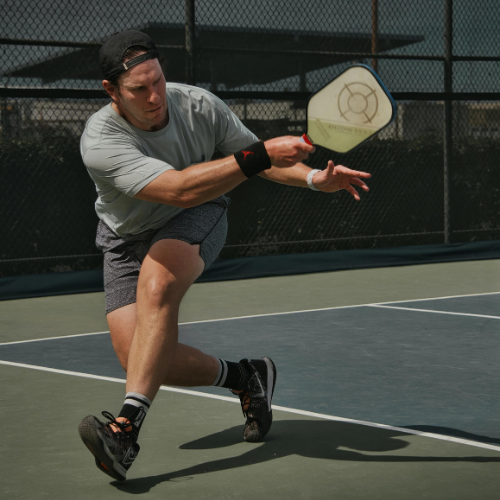Pickleball and tennis, two racquet sports that have captivated audiences worldwide, seem to be engaged in a friendly rivalry. Both games offer a unique blend of strategy, skill, and athleticism, but are they the same? Let's delve into the intricacies of these two sports to find out.
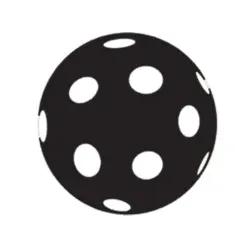
Introducing Pickleball and Tennis
Pickleball, a relatively new sport, is a fusion of tennis, table tennis, and badminton. It's known for its accessibility, with a smaller court size and simpler rules making it an easy game to pick up. Tennis, on the other hand, is a globally renowned sport with a rich history. It demands high levels of physical fitness, strategic gameplay, and precision.
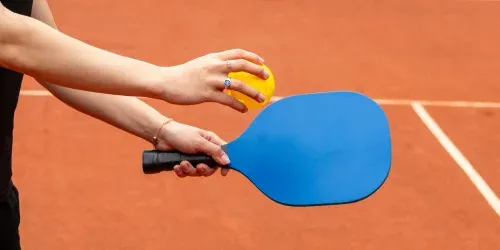
Gameplay
When comparing pickleball and tennis, one of the primary differences lies in the gameplay. Tennis courts are longer and wider than pickleball courts, which means players need to cover more ground in tennis. Moreover, tennis uses a unique 15, 30, and 40 scoring system, whereas pickleball games go up to 11 points.
In tennis, serving is a key part of the game, with players being allowed two attempts to serve diagonally into their opponent's service box. If a player fails to serve correctly on both attempts, it results in a double fault and a point for the opponent. Also, tennis players must hit the ball before it bounces twice, and the ball can be hit around or over the net, as long as it lands within the court's boundaries.
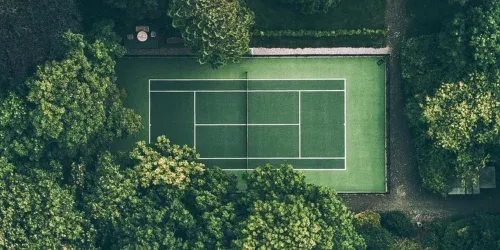
Pickleball, on the other hand, uses an underhand serve, and players must let the serve bounce once before returning - this is known as the double-bounce rule. Another unique feature of pickleball is the 'no-volley zone' or 'kitchen' - a seven-foot area extending from the net where volleying (hitting the ball without letting it bounce) is not permitted. This rule adds an extra layer of complexity and strategy to the game.
While tennis can be a test of stamina due to the larger court and faster pace, pickleball focuses more on strategy and placement, making each sport distinct in its own way.
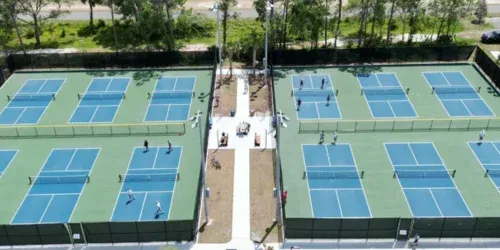
Equipment
The equipment used in both sports also differs significantly. Tennis players use a larger racquet and a heavier ball with a stronger bounce. On the other hand, pickleball paddles are smaller, lighter, and lack the textured strings found on tennis racquets. This difference in equipment affects not only the style of play but also the accessibility of the sport.
Delving further into the equipment used in both sports, the contrast becomes more apparent. In tennis, racquets typically have a length of 27 to 29 inches and a hitting surface strung in a crisscross pattern to control the ball's flight. The tennis ball is made up of rubber and covered in felt, allowing for a strong bounce and fast-paced play.
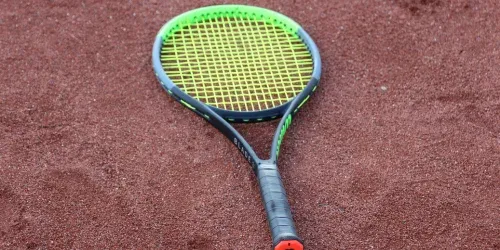
Pickleball paddles, however, are smaller and more rigid, measuring only 15 to 17 inches long. They are usually made from lightweight materials like aluminum, graphite, or composite, which helps in quick wrist action. The pickleball itself is made from hard plastic and has holes, similar to a whiffle ball. This design allows for less bounce and a slower pace, making the game more accessible to players of all ages and skills.
Footwear also plays a crucial part in both sports. Tennis shoes are designed to support lateral movement and quick direction changes, with reinforced toecaps for durability and thick soles to handle the hard court surfaces. Pickleball footwear leans more towards volleyball or cross-training shoes, offering a balance between forward and lateral support. They are lightweight with a lower profile to keep players closer to the court surface. Understanding these differences in equipment can provide a clearer picture of how each sport is unique, and better equip players for success on the court.
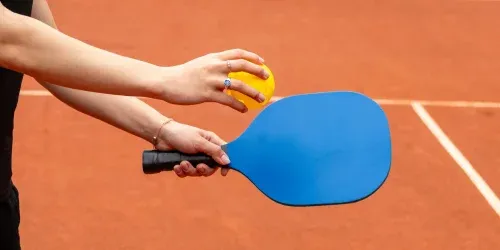
Rules
Although there are similarities in the rules — for instance, a point starts with a serve in both sports — there are also key differences. In pickleball, the serving team can only score points, and there are specific 'no-volley zones' on the court. These unique rules add a different layer of strategy to pickleball that is not found in tennis.
When venturing further into the rules of both sports, the distinctions become more noticeable. In tennis, there are certain customs that need to be followed. For example, the server usually declares the score before serving, and in doubles play, partners decide who will take which shot. Additionally, tennis has tiebreaker rules to determine a set's outcome when players have each won six games.
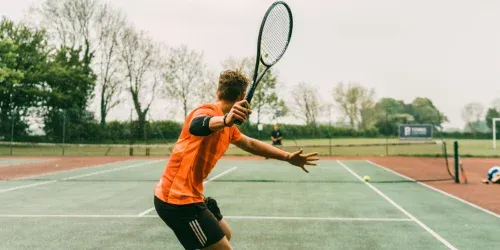
Pickleball rules, on the other hand, are quite distinctive. The serving team must serve from behind the baseline and the ball should bounce once on each side of the court before volleys are allowed. This rule is known as the 'double-bounce rule'. Also, the serving team continues to serve, swapping sides with each point won until they commit a fault. The service then passes to the opposing team. In doubles play, only one partner serves until their team makes a fault, contrary to tennis where the serve alternates between partners after every game.
One of the most unique rules in pickleball is the 'no-volley zone' or 'kitchen', which is a seven-foot area on both sides of the net. Players cannot volley the ball while standing in this zone, adding an interesting strategic element to the game. Should a player step into the 'kitchen' to volley a ball, the opposing team is awarded a point.
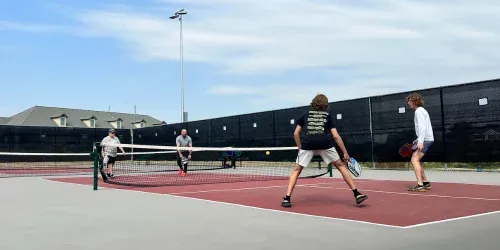
While pickleball and tennis share some similarities, they have distinct rules that make each game a unique experience. Understanding these rules can help players appreciate the complexity and strategic depth each sport brings to the table.
The Verdict
While both pickleball and tennis share some common ground, they are unique in their own ways. Pickleball's smaller court size, simpler scoring system, and different equipment make it more accessible and easier to learn. Tennis, however, requires more athleticism and skill, offering a higher level of competitive gameplay.
In conclusion, despite the similarities, pickleball and tennis are distinct sports, each offering its own unique blend of strategy, skill, and excitement. Whether you prefer the ease of pickleball or the challenge of tennis, both games have plenty to offer for sports enthusiasts.
